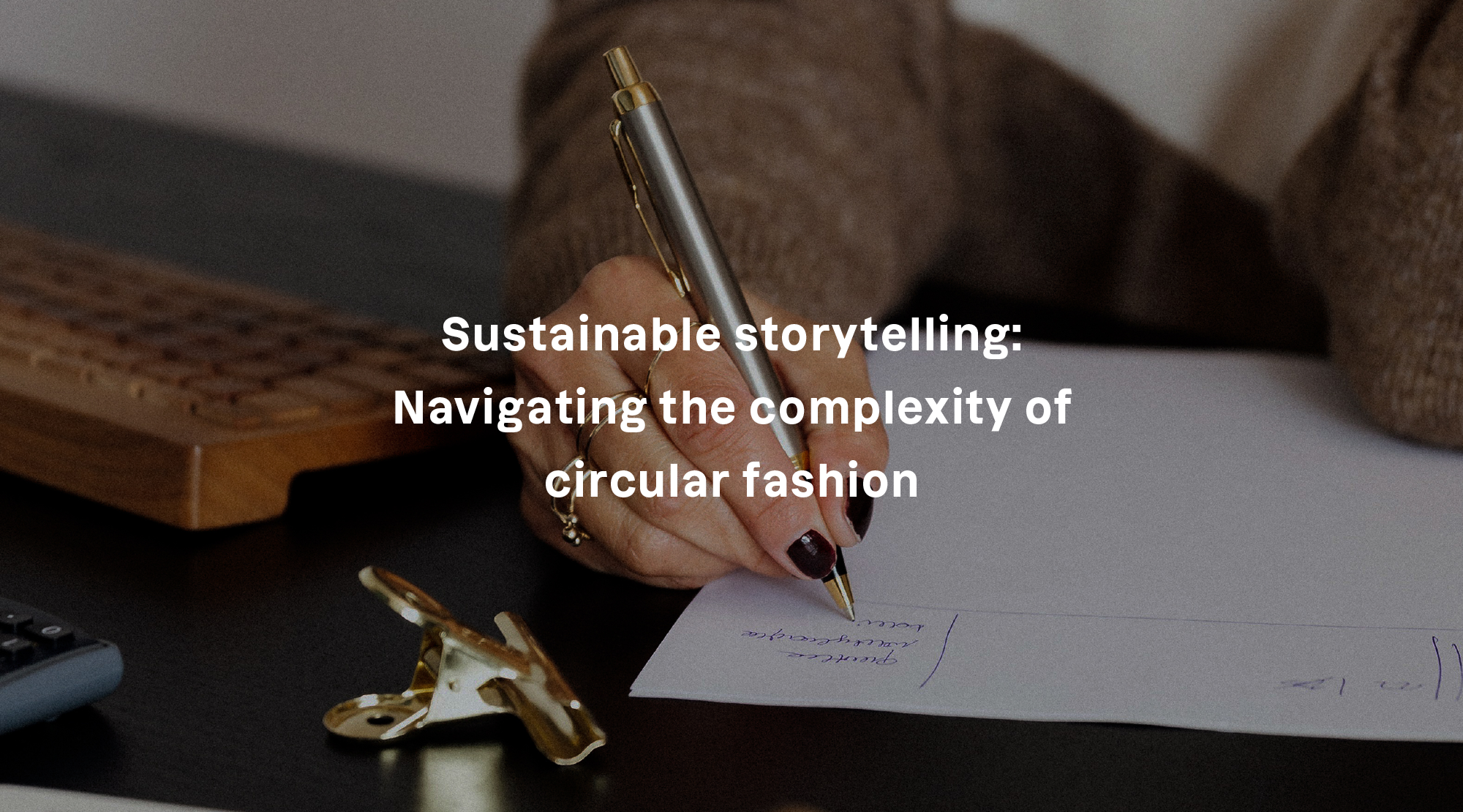

The power of sustainable storytelling
In today's world, where environmental concerns are at the forefront, circular fashion has emerged as a sustainable solution that aims to minimize waste and reduce the environmental impact of the fashion industry. However, communicating the concept of circular fashion and its benefits effectively to consumers and stakeholders is crucial for its success. This article delves into the realm of sustainable storytelling, exploring the complexities of circular fashion, common mistakes made in communication, and key takeaways for effectively conveying the message of sustainability.
Understanding circular fashion
Circular fashion represents a shift from the traditional linear " take-make-dispose " model to a circular economy where resources are reused, recycled, or repurposed. It emphasizes sustainable practices throughout the entire fashion supply chain, including design, production, distribution, and consumption. Circular fashion aims to extend the lifecycle of garments, reduce waste, and promote a more sustainable and ethical approach to fashion.
The difference between sustainable and circular fashion
Circular fashion and sustainable fashion are two distinct concepts within the realm of ethical and responsible fashion practices. While sustainable fashion encompasses a broad approach towards reducing environmental and social impacts, circular fashion specifically focuses on the principles of circular economy, aiming to eliminate waste and keep resources in continuous circulation. Therefore, it is important to understand that circular fashion is not the same as sustainable fashion.

The importance of communication in sustainability
Effective communication is essential for raising awareness and driving change in the fashion industry. It plays a pivotal role in educating consumers, inspiring sustainable choices, and fostering a deeper understanding of circular fashion. By employing sustainable storytelling techniques, brands and organizations can engage their audience, create emotional connections, and motivate action toward a more sustainable future.
In terms of storytelling, it is crucial to adapt the messaging and narrative to accurately reflect the unique characteristics and goals of circular fashion. Instead of solely emphasizing sustainability aspects, the communication should highlight the circularity aspect, emphasizing the importance of resource efficiency, waste reduction, and closing the loop in the fashion industry.
Common mistakes in sustainable storytelling
1. Not being honest and authentic
Transparency is key. When it comes to sustainability communications, it's crucial that we're completely truthful about the overall picture of our operations. That means being honest about areas that need improvement and making it crystal clear that we're taking steps to address those issues. We're all on a sustainability journey, and conscious consumers appreciate brands that are humble and honest about it.
2. Not backing your communication with the right data
Greenwashing is a real concern, so any sustainability claims we make need to be verifiable right from the start. We have to provide the right stats and data to anyone who wants to see them. If it's a hassle for customers to obtain this information, it gives them a reason to be skeptical about your claims.
3. Not communicating enough
A solid sustainability strategy has many components, and each one may appeal to different audiences like investors, stakeholders, or consumers. But if we want to create a buzz around our brand's sustainability efforts, we need to focus on engaging consumers. That means shouting from the rooftops about the initiatives that directly affect them and communicating every little thing you are doing.
4. Not being clear
Last but not least, we need to avoid wishy-washy sustainability statements. Consumers expect us to have a clear strategy in place, but they're often left confused about which brands are genuinely responsible. We have to communicate our bold sustainability actions thoroughly and consistently to stand out from the crowd.
Key takeaways for effective communication
So as you can see, there's more to communicating a sustainability strategy than meets the eye. It's not just about ticking boxes and putting out reports. We have to convey our message effectively to truly benefit from our sustainability efforts.
Good sustainable storytelling plays a crucial role in inspiring and engaging your audience, driving positive change, and promoting sustainable practices. Here are some key principles to consider when crafting sustainable stories:

- Know Your Audience: Understanding the values, aspirations, and concerns of your target audience is vital for crafting effective communication. Tailor your messaging to resonate with their needs and motivations.
- Embrace Authenticity: Authenticity is key to sustainable storytelling. Share real stories, experiences, and achievements that reflect the genuine efforts and commitment to sustainability within your brand or organization.
- Utilize Multiple Channels: Explore various communication channels, such as social media, blogs, videos, and partnerships, to reach a broader audience and amplify your sustainable message.
- Engage and Collaborate: Foster a sense of community and encourage dialogue with your audience. Engage in conversations, respond to feedback, and collaborate with like-minded individuals or organizations to amplify your impact.
At Yuma Labs, we also ensure continuous communication with stakeholders, extending beyond the point of sales to reach end-consumers. This is achieved through the implementation of a digital product passport for our clients. - Measure and Improve: Continuously measure the impact of your sustainability communications. Track key metrics, evaluate outcomes, and use the insights gained to refine and improve your communication strategies.
Sustainable storytelling holds immense power in the realm of circular fashion. By effectively communicating the principles, benefits, and human aspects of circular fashion, brands, and organizations can inspire and engage consumers in the journey toward a more sustainable future. By avoiding common mistakes and incorporating valuable lessons from Yuma Labs, we can navigate the complexities of circular fashion and build a more sustainable and ethical fashion industry.
